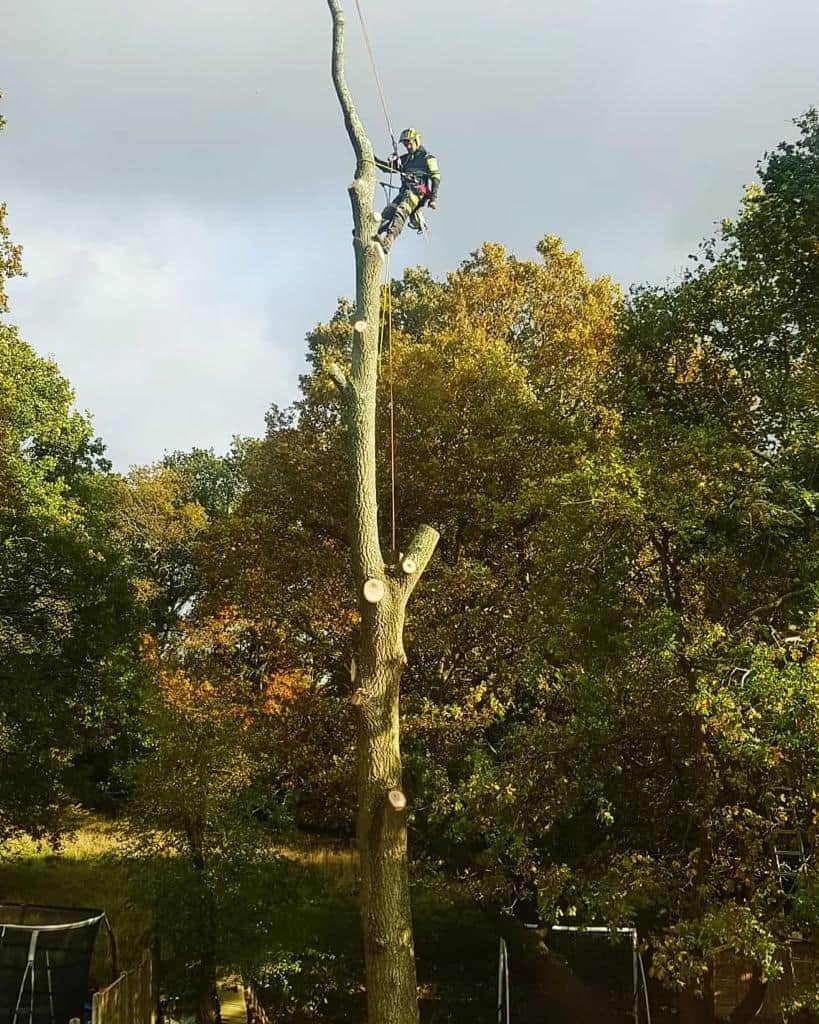Introduction
Rain can be a welcome sight for any garden in Ascot, Berkshire, especially during a dry spell. But when it comes to your trees, heavy rainfall often reveals problems that have been quietly developing out of sight. At NS Tree Surgery Ascot, we frequently respond to issues that only come to light after a downpour—and by then, the damage may already be underway.
Whether you’re dealing with mature trees or newly planted ones, being aware of post-rain risks can help you catch signs early and protect your landscape before small issues become major hazards.
1. Root Rot and Poor Drainage
Excess water can quickly saturate the soil, particularly in heavy clay areas like parts of Berkshire. When drainage is poor, tree roots can begin to suffocate and rot, especially in species that dislike wet feet. You won’t always see the rot, but signs like leaf yellowing, dieback, or a leaning trunk are red flags.
2. Sudden Leaning or Shifting
Rain-softened ground can loosen a tree’s anchorage, causing it to lean or tilt unexpectedly. Trees with shallow root systems or those in recently disturbed soil are most at risk. A slight lean may seem harmless at first—but it could indicate instability, which could lead to collapse in the next storm.
3. Fungal Growth at the Base
Some fungi thrive in moist conditions. After rain, you might notice mushrooms or conks forming around the base or trunk of your trees. These aren’t just cosmetic—they could be signs of decay within the wood or roots, which compromises structural integrity.
4. Branch Splitting
Rain can be surprisingly heavy, especially when it’s accompanied by wind. Waterlogged branches become heavier and more prone to cracking or splitting, particularly on trees with dense canopies or poor prior pruning. If left unaddressed, split branches can become entry points for disease or break off entirely.
5. Cankers and Bark Disease
Rain often facilitates the spread of bacterial and fungal pathogens, which take advantage of weakened or waterlogged bark. Cankers—sunken, dead patches on trunks or branches—can appear seemingly overnight and may expand quickly if not treated.
6. Compacted Soil Around the Base
Rain doesn’t just moisten the soil—it can also compact it, particularly in gardens with heavy foot traffic or where water pools. Compaction reduces oxygen to the roots, impacting growth and long-term health. You might spot this as poor leaf growth or stunted development.
7. Insect Activity Surge
Wet conditions often attract pests. Bark beetles, aphids, and other insects take advantage of weakened, damp trees, boring into soft bark or laying eggs under wet leaves. The damage they do post-rain often goes unnoticed until the tree begins to suffer more visibly.
8. Hidden Cavities Revealed
Rain can seep into existing cracks and hollows in trunks or large limbs, making them more visible as they fill with water. This water exposure reveals the extent of internal decay that might have been hidden during dry weather. If these cavities worsen, the tree may become unstable or hazardous.
Why Prompt Attention Matters
While rain uncovers these issues, it also gives property owners a critical opportunity: the chance to spot weaknesses and take action before they become emergencies. Early intervention can save trees, reduce risk, and often minimise the cost of repairs or removal.
Key Signs to Watch After Rain
- Pooling water around trunks
- Unexpected leaning or movement
- Bark peeling, cankers, or fungal growth
- Wilting or yellowing leaves despite adequate moisture
- Cracks in branches or visible hollows
Conclusion
Rain brings life to our gardens, but it also exposes the hidden health of our trees. At NS Tree Surgery Ascot, we specialise in diagnosing and resolving post-rain tree issues before they pose a serious risk to your property or safety.
If your trees have started acting strangely after rainfall, don’t wait for the next storm to make things worse. Contact our expert team today and let us help you maintain a safe, healthy, and beautiful landscape—rain or shine.
Call us on: 001344 951 395
Click here to find out more about NS Tree Surgery Ascot
Click here to complete our contact form and see how we can help with your trees needs.

